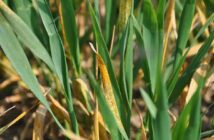EFSA will publish the EU peer review of the active substance glyphosate on 12 November in line with previous communication on EFSA’s website.
In the EU, active substances used in plant protection products are evaluated or re-evaluated using a phased approach. First, an initial draft risk assessment report is produced by a designated rapporteur Member State (RMS). In the case of glyphosate the RMS is Germany. The report is peer-reviewed by EFSA, which sends its conclusion to the European Commission. The Commission then decides whether or not to include the substance in the EU’s list of approved active substances
Since August 2002, EFSA has been responsible for the EU peer review of active substances used in plant protection products. This task is carried out by EFSA’s Pesticides Unit in line with procedures and deadlines set out in EU legislation.
Directive 91/414/EEC concerning the placing of plant protection products on the market states that active substances in plant protection products are only approved in the EU if it may be expected that their use will not have any harmful effects on human and animal health or on groundwater or any unacceptable influence on the environment.
The Directive required a review by the end of 2009 of all active substances that were on the market in the EU by 1993. The substances covered by the review programme are often referred to as existing active substances since they were on the market at the time the legislation entered into force. So-called new active substances that have been placed on the market since July 1993 are also assessed following the same procedures.
The evaluation of both existing and new active substances is done through a phased approach:
– For each substance an initial draft risk assessment report (DAR) is produced by a designated rapporteur Member State (RMS),
– The RMS’s risk assessment is peer reviewed by EFSA in cooperation with all Member States,
– EFSA drafts a conclusion on the active substance,
– The European Commission takes a legislative decision whether or not to include the substance in the Union’s list of approved active substances.
Since 14 June 2011, Directive 91/414/EEC is no longer applicable. It has been replaced by Regulation (EC) No 1107/2009 concerning the placing of plant protection products on the market. For the review of each active substance manufacturers or marketing companies have to submit a complete data package (dossier) investigating physical and chemical properties, fate and behaviour in the environment, toxicological and ecotoxicological effects, allowing for a risk assessment for human and animal health and the environment, in accordance with the EU legislation. Information and support concerning the status of the active substance or general guidance, including scientific and technical guidance, are available via EFSA’s Applications Helpdesk. Where the dossier has to be completed with scientific peer-reviewed open literature, the Guidance of EFSA on the submission of scientific peer-reviewed open literature for the approval of pesticide active substances under Regulation (EC) No 1107/2009 has to be used.
A Member State is appointed rapporteur with the job of carrying out an initial risk assessment based on the dossier according to agreed evaluation procedures, and preparing a Draft Assessment Report (DAR). If no dossier is provided or if it lacks required information, the European Commission may take necessary steps to remove the substance from the market.
The DAR is made publicly available on the EFSA website for a public consultation allowing for comments. Scientists from the Pesticides Unit and the Member States comprehensively peer review the DAR in order to guarantee the highest possible standards. If necessary, discussions between expert scientists from the regulatory authorities of the Member States also take place. All available public DARs can be accessed at any time on the EFSA website.
EFSA, as an independent scientific organisation, then drafts a scientific report concluding on the risk assessment (the EFSA conclusion), which is sent to the Commission and published on the EFSA website along with background documents.
Taking into account EFSA’s conclusions, the Commission in consultation with the Member States takes a decision on whether or not to approve an active substance. This determines whether the substance can be used in a plant protection product in the EU. The Member States also take decisions at national level.



